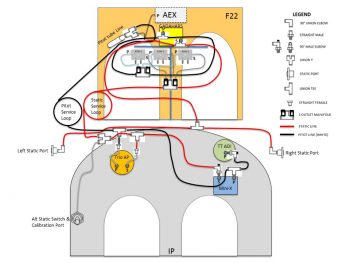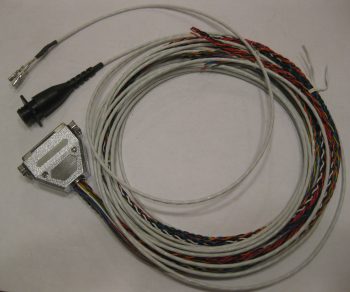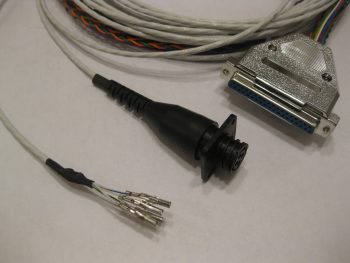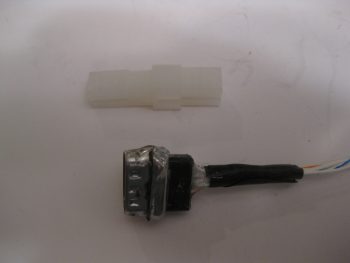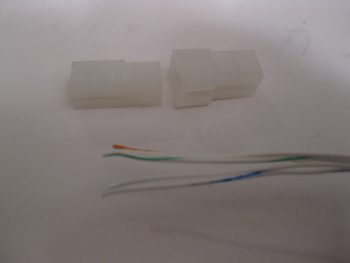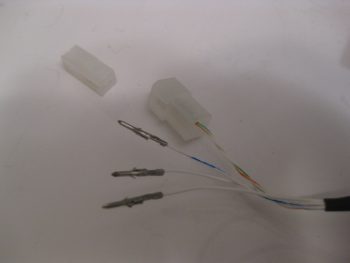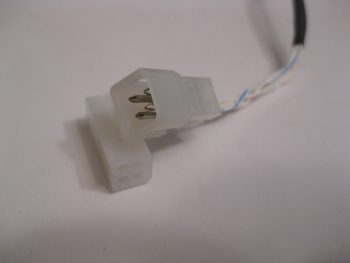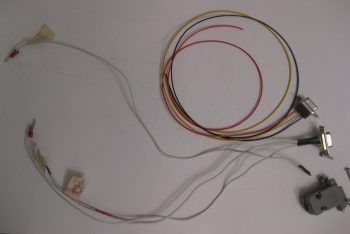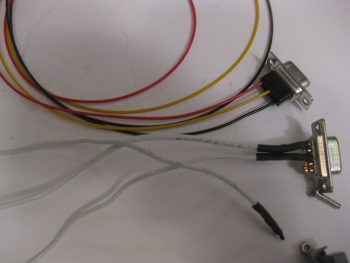Today I started out by finalizing my pitot-static system plan. I still need to make some phone calls tomorrow to some of system vendors to ensure I’ve got the most optimized configuration for hooking up the pitot-static lines on their respective systems, but beyond that I’m pretty much done. I’ll be dropping an order to Stein here soon and it will include the remainder of the parts I need to complete my pitot-static system install.
In addition the pitot-static system, I also reviewed & assessed my recently added Triparagon connectors that should allow me to remove the instrument panel fairly easily. I found a few more issues that made me add the Trio autopilot’s wiring harness to the list of components that require me to simply remove the connector. The main issue with this harness is that there are shielded wires that run all the way back to the roll servo. Clearly these are not easily removed, and I’m sticking to Stein’s advice (because I agree!) to NOT add connectors in the middle of shielded wire runs. Thus, this requires me to remove the Trio autopilot’s connector and leave it in the plane when I remove the instrument panel. In short, I made a lot more progress on the concept of running all the instrument panel components’ wires through connectors to allow EZ removal of the panel.
Later on, I figured I would get some wiring done while I was watched football. Since I had just had the Trio autopilot wiring harness out, I decided to re-terminate the roll servo pins with AMP CPC pins vs Molex, and add the AMP CPC connector housing. I’m not messing with the pitch servo since it needs to be cut significantly shorter and I need to get a good measurement for that.
The pic below shows how the connector pins looked before I started. Again, I cut the Molex pins off and reterminated the wires with AMP CPC pins and then mounted the connector housing for the roll servo cable.
Continuing on, perhaps a little ironically I removed the 9-pin D-Sub connector from the roll TRIM servo and swapped it out with a 4-pin Molex connector I got from Stein. As you probably know, I’m not a huge fan of Molex connectors, but I figure any roll trim servo failure is fairly benign in the operational realm of flying a Long-EZ.
I started by cutting off the D-Sub connector as close to the connector housing as possible. In both pics above and below you can see the 4-pin Molex connector housing.
I then reterminated the wires with mini-Molex pins.
And then snapped the pins in place into the Molex connector housing. BTW, this connector is J6. I’ll of course wait to terminate & add wires to the other half of the connector when I actually install the roll trim servo.
My last action of the evening was to rewire the wiring harness for the TruTrak ADI. As I was taking inventory of all the wires, which included digging into the manuals, I noted that the wires on the TT ADI’s wiring harness connector were simply HUGE! Although the installation manual calls out for 22 AWG wiring, these wires range from 14 to 18 gage… way too big! Since the wires were soldered into the 9-pin D-Sub connector, I simply created an entire new TT ADI wiring harness D-Sub connector with crimped pins. I of course used 22 AWG wires for the new harness.
Here’s a closer shot of the new TT ADI wiring harness (red, black & yellow) that will replace the old one (white wires).
Tomorrow I’ll finish the plan for the wiring, finalize the positions of the airspeed switches and other Triparagon cross shelf mounted components (“CrackerJack parts!”) and attempt to get the Triparagon cross shelf mounted. I’ll most likely order the pitot-static parts as well after talking to a few equipment vendors.

